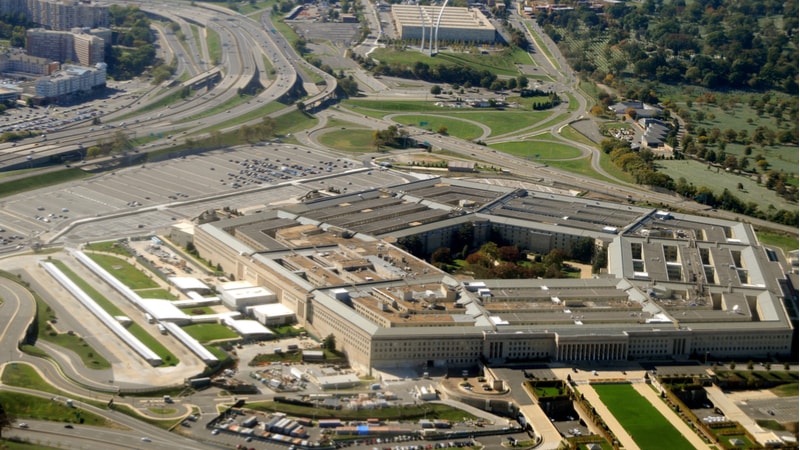
Rep. Rob Wittman, R-Va., said this week that Congress is increasingly likely to approve a short-term continuing resolution (CR) budget agreement to keep the government funded past the end of the current fiscal year that ends on Sept. 30, as lawmakers work to reconcile their competing versions of the FY2026 National Defense Authorization Act (NDAA).
The House version of the NDAA matches the Department of Defense’s (DOD) $848 billion budget request and was approved by the House Armed Services Committee in June on a 55–2 vote. The Senate Armed Services Committee advanced its version on July 12 by a 26–1 vote, proposing a higher $924.7 billion top-line – including $878.7 billion in discretionary defense spending.
The two chambers must reconcile their differences through a conference committee, with final passage expected by year’s end.
However, speaking ahead of House floor debate set for next week, Wittman acknowledged that the sizable gap between the House and Senate defense bills presents a challenge to meeting the Sept. 30 fiscal year deadline.
“We’ll have to reconcile that difference and figure out how to get the necessary votes to pass both the House and the Senate,” Wittman said during an address at the Defense News Conference on Sept 4.
Although Wittman voiced concern about relying on a CR to fund defense priorities, he said he would support a short-term measure to prevent a government shutdown past Sept. 30. He warned, however, that a long-term CR would significantly undercut the impact of the additional defense investments included in the reconciliation funding bill approved by Congress earlier this year.
“The $150 billion additional dollars [in the reconciliation bill] is a good help … but all the positive effects of that go away if we have a long-term CR,” he said, pointing out that $113 billion in first-year funding could be frozen in that event.
More than 1,000 amendments have been submitted ahead of the House floor debate next week, Wittman said. He added that while the Senate is advancing a framework for its version of the bill, it is unlikely to receive a full vote before conference negotiations begin – further complicating the path to a final agreement ahead of the fiscal year deadline.
As lawmakers prepare to navigate those proposals, both the House and Senate versions of the NDAA lay out distinct priorities on emerging technologies, acquisition reform, and military readiness.
Cybersecurity, AI Take Priority
Both versions prioritize modernization and emerging technologies, though their approaches vary. The Senate bill emphasizes a comprehensive cybersecurity and artificial intelligence strategy, establishing formal oversight roles and expanding innovation programs. It calls for AI oversight teams, formalizes cyber deterrence policy, and supports secure “sandbox” testing environments.
The House bill takes a more investigative approach, mandating a department-wide survey of AI capabilities in operational settings and requiring a detailed briefing by April 2026. It also includes cyber training for Space Force officers as part of initial instruction.
Counter-Drone Strategies Differ
Both bills address growing threats from unmanned aerial systems but propose different solutions. The Senate draft centralizes oversight of small drone threats under the Under Secretary of Defense for Acquisition and Sustainment, initiates pilot programs, and requires base-level drone mitigation planning.
The House version mandates a pilot program at designated facilities and requests a classified report on C-UAS development progress by December 2025, coordinated through the Joint Counter-small Unmanned Aircraft Office.
Technology, Spectrum, and Missile Defense
The Senate bill includes provisions to preserve key military spectrum bands critical for missile defense and radar systems, freezing changes to systems operating in the 3.1–3.45 GHz and 7.4–8.4 GHz ranges through 2034.
Both bills support expanded investment in hypersonic weapons, telemetry ships, and continued development of the Golden Dome missile defense system. They also call for revisions to national missile defense strategy.
Acquisition Reform and Personnel
Much like the Senate version of the bill, the House NDAA prioritizes tech acquisition reforms to streamline processes and boost collaboration with private industry.
The Senate version includes sweeping acquisition reforms, such as redefining executive roles and restructuring the Joint Requirements Oversight Council (JROC) to emphasize strategic priorities. The House version maintains more traditional oversight roles, renaming the JROC while affirming the need for civilian control and service-specific input.
Beyond the space and tech initiatives, the House bill includes a 3.8 percent pay raise for military personnel – mirroring the Senate NDAA, DOD’s budget request, and the appropriations bill advancing through the House.
